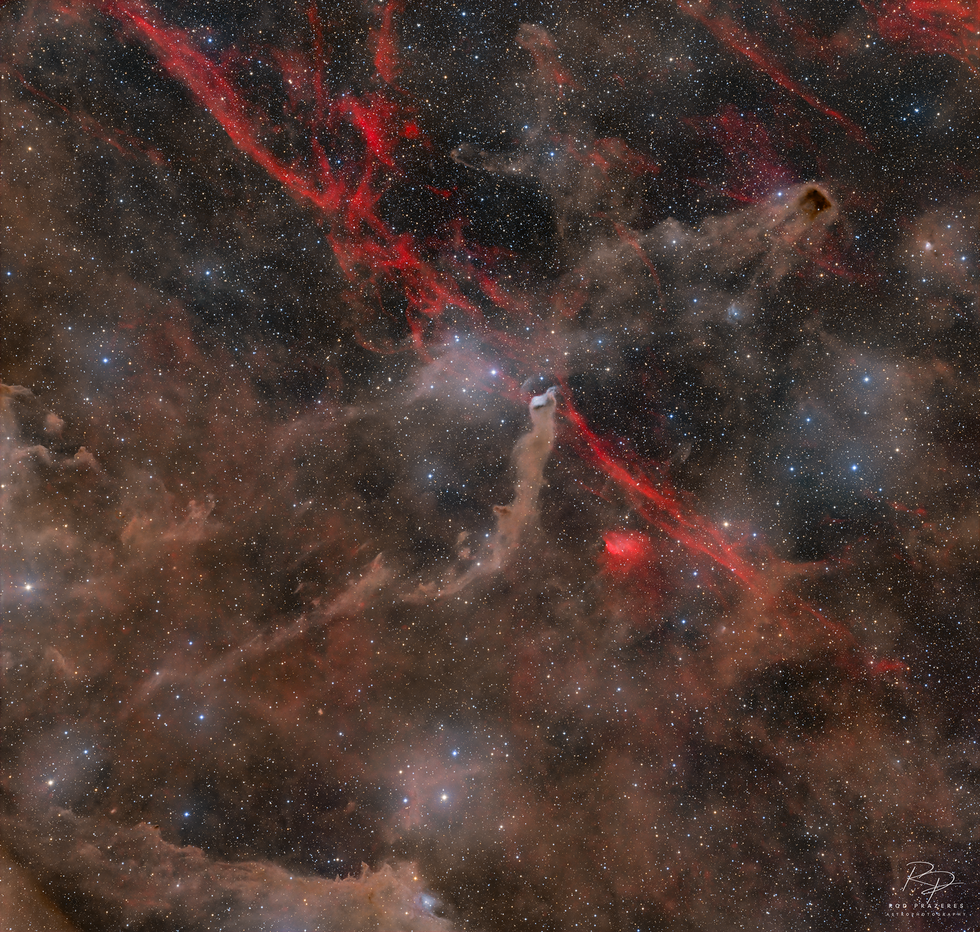“Into the Cosmic Shadows”: Wolf’s Cave Nebula – LDN 1217
“Into the Cosmic Shadows”: Wolf’s Cave Nebula – LDN 1217
All my socials: https://linktr.ee/deepskyjourney
Explanation: LDN 1217, also known as the Wolf’s Cave Nebula, is a dark nebula in the constellation Cepheus. This region is a dense molecular cloud, a vast reservoir of gas and dust where future stars may one day form. Unlike emission nebulae, which glow due to ionized gas, dark nebulae like Wolf’s Cave absorb and scatter background starlight, creating eerie, shadowy structures against the starry sky.
Within this cosmic landscape, faint reflection nebulae hint at embedded young stars attempting to pierce through the dense veil of interstellar dust. These clouds are composed of tiny dust grains mixed with cold gas, rich in complex molecules that provide the raw material for stellar and planetary formation. The surrounding region contains a mix of dark, reflection, and faintly illuminated nebulae, showcasing the intricate interplay of light and shadow in deep space.
Though primarily a dark nebula, faint H-alpha emission can be found in the surrounding area, possibly from scattered ionized hydrogen excited by nearby energetic stars. This subtle glow contrasts with the dense, cold dust clouds, revealing the complex processes occurring at the edges of the nebula.
Total Integration: 14 hours in HaLRGB
Copyright: Rod Prazeres Astrophotography
Credits: Rod Prazeres Astrophotography / Telescope.Live
Explanation: LDN 1217, also known as the Wolf’s Cave Nebula, is a dark nebula in the constellation Cepheus. This region is a dense molecular cloud, a vast reservoir of gas and dust where future stars may one day form. Unlike emission nebulae, which glow due to ionized gas, dark nebulae like Wolf’s Cave absorb and scatter background starlight, creating eerie, shadowy structures against the starry sky.
Within this cosmic landscape, faint reflection nebulae hint at embedded young stars attempting to pierce through the dense veil of interstellar dust. These clouds are composed of tiny dust grains mixed with cold gas, rich in complex molecules that provide the raw material for stellar and planetary formation. The surrounding region contains a mix of dark, reflection, and faintly illuminated nebulae, showcasing the intricate interplay of light and shadow in deep space.
Though primarily a dark nebula, faint H-alpha emission can be found in the surrounding area, possibly from scattered ionized hydrogen excited by nearby energetic stars. This subtle glow contrasts with the dense, cold dust clouds, revealing the complex processes occurring at the edges of the nebula.
Total Integration: 14 hours in HaLRGB
Copyright: Rod Prazeres Astrophotography
Credits: Rod Prazeres Astrophotography / Telescope.Live
SPECIFICATIONS
Telescope
Takahashi FSQ106ED
Camera
FLI PL16083
Location
IC Astronomy Observatory, Spain
Date of observation
19/11/2022
Filters
HaLRGB
Processing
Pixinsight + Photoshop
Credits
Copyright: Rod Prazeres Astrophotography; Credits: Rod Prazeres Astrophotography / Telescope.Live

